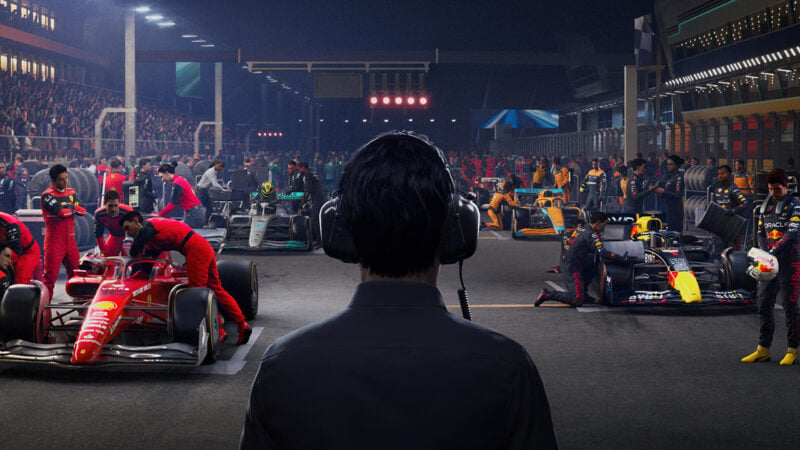
If you’re a massive fan of Formula 1 and management games like Football Manager, you’ve not been particularly well catered-to over the last 20 years. Aside from the simplistic mobile title F1 Manager — now called F1 Clash — there’s really not been anything since EA’s 1999 F1 Manager title to satisfy your needs.
Now there’s a new title, F1 Manager 22, courtesy of renowned space exploration and freight simulator developer Frontier Developments, which is looking to fill that gap. Despite the relatively similar name, F1M22 is a rather different animal, digging into everything that’s required to be a good F1 team principal.
Frontier has sent over a PS5 copy of the title for us to test out (hopefully it’s sent one to Scuderia Ferrari too), and you’ll be able to pick it up from today, Tuesday August 30, on PC, PlayStation 4/5, and Xbox One/Series too.
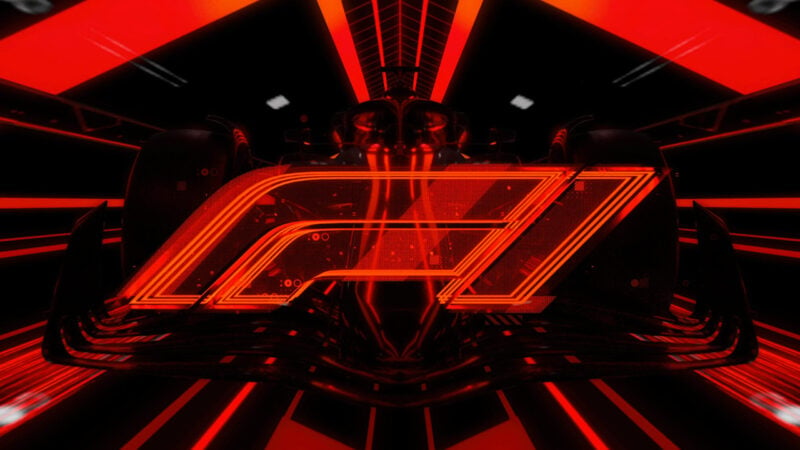
F1 Manager 22: Review
First things first, we can’t put F1 Manager 22 through our usual review process. That’s because the player cannot drive anything at all in the game, which makes it impossible for us to give a score in one of our five categories and pretty difficult to objectively rate in two others.
There’s also no online functionality at all — as it’s strictly a single-player game — so we’d have a score capped at about 40%, rated only on content and part of the sound and graphics categories, which hardly seems fair or appropriate.
That means that, while we’ve put the title through its paces, we’re not splitting the review up into its usual sections and you won’t find a score at the end.

F1 Manager 22: Overview
What F1M22 does is essentially calve off the non-driving parts of the official EA F1 title’s Career Mode into their own standalone game, but turn up the detail and possibilities to 11.
You’ll be asked to take the pit wall hot seat of one of the ten official teams of Formula 1, and be put in charge of… well, everything from the coffee machine in the hospitality suite (sort of) up to the guy who designs your championship-winning chassis.
In fact the game does go a bit too far. The reality of being an F1 team principal means you get in the best people and delegate, but in F1M22 you’ll be making specific decisions even during the race that would ordinarily fall under the purview of each driver’s race engineer. Trying to juggle two drivers’ strategies simultaneously, and dynamically in real-time, is a mite stress-inducing.
However actual races are pretty far into the process. Once you’ve made the decision on which of the ten teams you wish to manage, you’re immediately presented with an almost overwhelming amount of information — and that will be your day-to-day in the game.
It’s well worth having the introductory guide turned on, as she helps explain a lot of what’s going on. And there is a lot going on; you have a main dashboard with a calendar, standings, and current situation, but also a slew of other tabs covering finances, car and car development, facilities, drivers, other staff — and you’ll be juggling all of it.
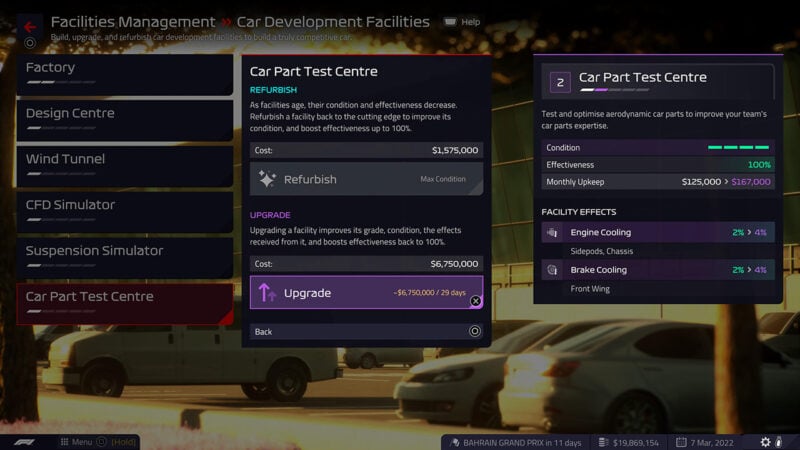
F1 Manager 22: Team Building
The basic principle is relatively simple. You’ll need the best facilities with the best personnel to make the best cars and hire the best drivers to get the most points. But you’re limited by your budget — and the budget cap — and beholden to the sponsors who give you money (at the expense of your development time), as well as keeping everyone happy, from the board down to the drivers. And of course time.
Things won’t be too complicated for your first race, as you likely won’t be changing much (unless you signed with Aston Martin specifically to fire Lance Stroll…), but thereafter it’s a constant juggling act.
You’ll not only need to build new facilities and upgrade them — from a memorabilia room and fan tour center to a wind tunnel, CFD simulator, and factory — but pay for their upkeep and refurbish them to keep them in top condition.
Each facility has an effect on your team. Your drivers gain more experience from racing in the simulator, while your engineers gain experience from the team hub. The speed and effectiveness of vehicle development depends on the level of engineering facilities, while the hospitality areas make you more attractive to sponsors and prospective staff.
Developing the car itself is insanely in-depth. Every component affects the balance of the car, and you’ll rarely see something that’s beneficial in all areas. The game will advise you how much each new part affects various aspects — downforce and drag, high-, mid-, and low-speed cornering, brake and engine cooling — to three decimal places at times, highlighting the concept of marginal gains.
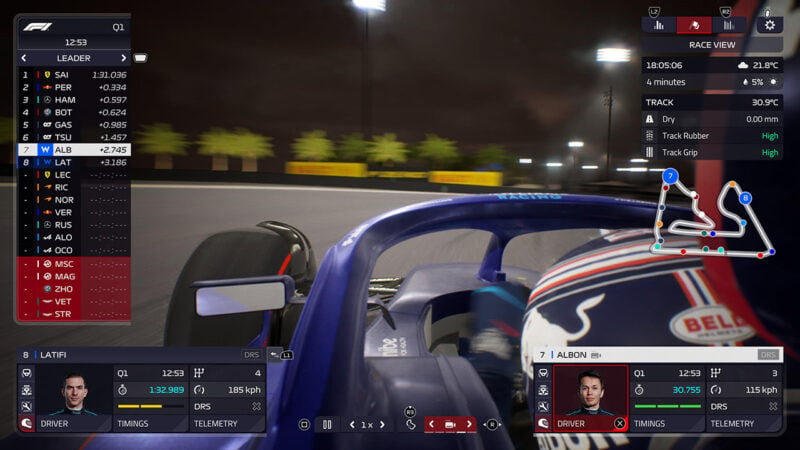
F1 Manager 22: The Race
It’s almost possible to forget that there’s some races in the mix too, but F1M22 goes just as hard in that department.
Each track session is simulated, but in full-fat visuals. You can switch between your drivers at any time and flick through various camera angles to watch the race live. It’s a few steps short of the quality of F1 22, and the car movement is often quite jarring as the drivers jerk the steering wheel about, but it is unnecessarily immersive.
Rather than sitting through a full-length race, you can accelerate time up to a 16x factor, although it will switch to a radar view of the circuit at higher multipliers. The game flicks back to real time automatically when incidents happen or around a driver’s scheduled stops — which you’ll plan before the race.
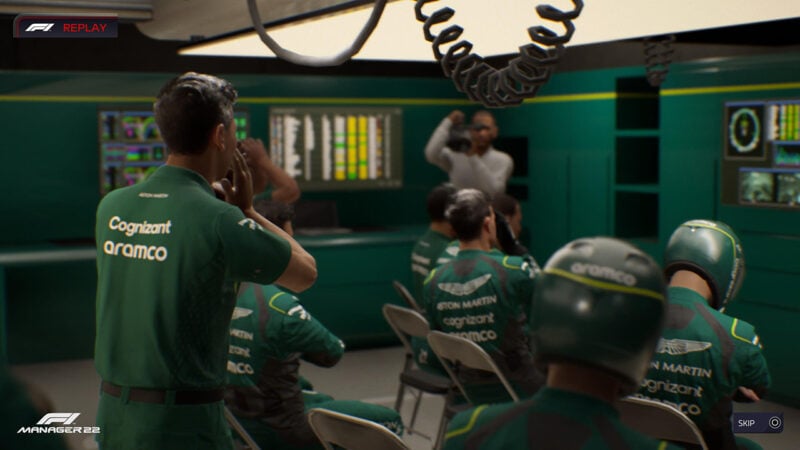
You can also skip through practice and qualifying sessions to speed things up, with the engineers making sure the drivers run through relevant programs. These will result in the driver learning the track and car, and you can adjust aspects of the vehicle — gearing, camber, downforce — if they’re uncomfortable with it.
While Frontier has gone to quite some lengths in using real-world data on weather, safety cars, and red flags — as well as rating each driver on 11 different metrics — to determine how much each race will be affected by incidents, our experience was pretty average racing.
Cars were involved in incidents, some in multiple-car collisions, but all 20 finished every race on each occasion, with Latifi in last regardless.
You’ll be directly involved in the races too, asking drivers to get more aggressive or hold position, deploy more ERS or recover it, or turn the engine mode up or down, all with authentic radio communications. In addition you’ll have full control over pit strategy, from the preset strategies to in-race calls; we’ve not had any drivers refuse to box yet.
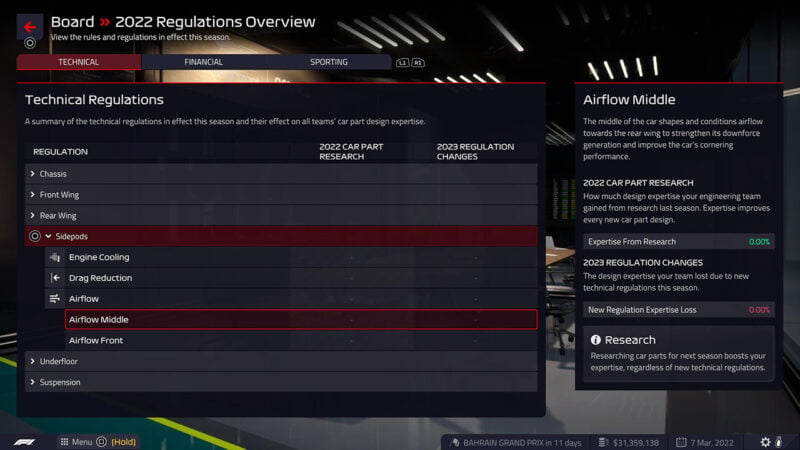
F1 Manager 22: Ever-Changing Career
Of course it’s not just about one race or even one season — although it’ll take you at last 16 hours to get through that first year. In F1M22 you can keep on going as long as you don’t get bored or sacked.
A constantly regenerating pool of staff, both technical and driving, means there’s never an end to recruitment, and there’s also a constantly changing ruleset that reflects the two-way communications between teams and F1 management.
There’s a set of rules and regulations — technical, financial, and sporting — which the teams can vote on periodically. Testing and component limits, budget caps, prize money, points structures, and even the capabilities of various parts can be subject to majority vote; you may spend a lot of money on a new suspension system only to find it’s outlawed.
Oddly, one thing that doesn’t change is you. As far as we can tell, it’s not possible to switch teams, so if the board tires of you, that’s likely game over (although we need to get sacked to truly test this out). That means you’ll need to pick carefully to start with, and a team with a higher budget and smaller expectations is ideal.
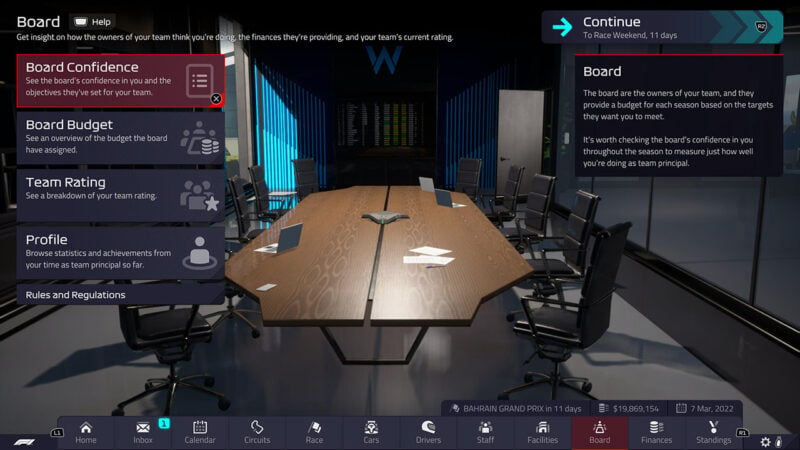
F1 Manager 22: Summary
Ultimately it’s fair to say that if you’re after a driving game with a strategy aspect, the career mode of the mainline F1 series will be much more up your street. However if you don’t like the driving part — and F1 cars are pretty irritating and draining to drive most of the time — getting in the way of everything else, F1 Manager 22 is the way to go.
It will be something of a niche product though. The amount of detail it goes into is at times akin to running a small business, albeit one with a $140,000,000 budget; it’s a high-stress, full-time job — although you can at least leave it in suspended animation for a while.

The whole experience can be overwhelming, and after the initial guided period there’s no help for what facilities to prioritize or any spending targets. We imagine a lot of players are going to run into a situation where they have no more money to refurbish crumbling departments and get sacked after dozens of hours invested.
There’s other areas where it could improve too. Although we do like watching the races unfold, having the optional ability to entirely simulate them — with your capable race engineers making the calls — would be great. That is, after all, why you hired them…
It’d also be nice to see some of the facilities you’ve built. Instead of a nice, new memorabilia room, for example, all you get is a new menu to refurbish or upgrade it.
Still, as a first run at a Football Manager-esque title in the F1 sphere, it’s got plenty to recommend it. Just be prepared not to see light again until Christmas.
See more articles on F1 Manager.










